You’re right. Cooking the perfect T-bone or ribeye steak can be challenging. Even seasoned home cooks often struggle to achieve the ideal sear and doneness.
But don’t worry; mastering these cuts is easier than you think with the right techniques.
In this step-by-step guide, you’ll learn the best methods for preparing mouthwatering T-bone and ribeye steaks, whether you grill, pan-sear, or use the oven.
We’ll cover everything from selecting the right cut and thickness to seasoning, cooking temperatures and times, and achieving the perfect finish.
Following these straightforward steps, you can confidently cook steaks and impress your friends and family with restaurant-quality results at home.
Let’s get started on your journey to steak mastery!
What is T-Bone Steak?

The T-Bone steak is distinguished by its T-shaped bone, which divides two different types of meat on either side. On one side of the bone is the tenderloin, and on the other is the strip steak.
This unique structure gives the T-Bone its signature look and lets steak lovers enjoy two cuts of meat in one serving.
What is Ribeye Steak?

The Ribeye steak is cut from the cow’s rib section and is known for its rich marbling, which enhances flavor and texture.
This steak primarily consists of the longissimus dorsi muscle, alongside smaller amounts of the spinal and complexus muscles, contributing to its luxurious taste.
Step-by-Step Guide to Cooking T-Bone Steak Perfectly
1. Ingredients Required
| Ingredient | Description | Usage |
|---|---|---|
| T-Bone steaks | Known for its distinct ‘T’ shaped bone and rich flavor | The main item to be cooked |
| Kosher salt | Coarse salt is ideal for seasoning steaks | Seasoning before cooking |
| Freshly ground black pepper | Adds spice and enhances meat flavor | Seasoning before cooking |
2. Thawing Your T-Bones
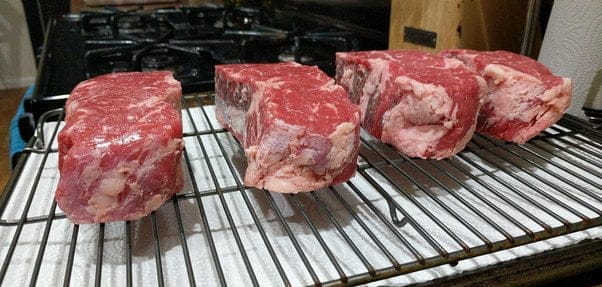
To ensure even cooking and maximum tenderness, it’s crucial to fully thaw your T-bone steaks before cooking. Attempting to cook partially-frozen steaks can lead to an overcooked exterior and a cold, undercooked center.
Thaw your steaks in the refrigerator for at least 24 hours to ensure safety and even temperature throughout.
This method prevents harmful bacteria growth and allows the meat to thaw gradually.
3. How to Season
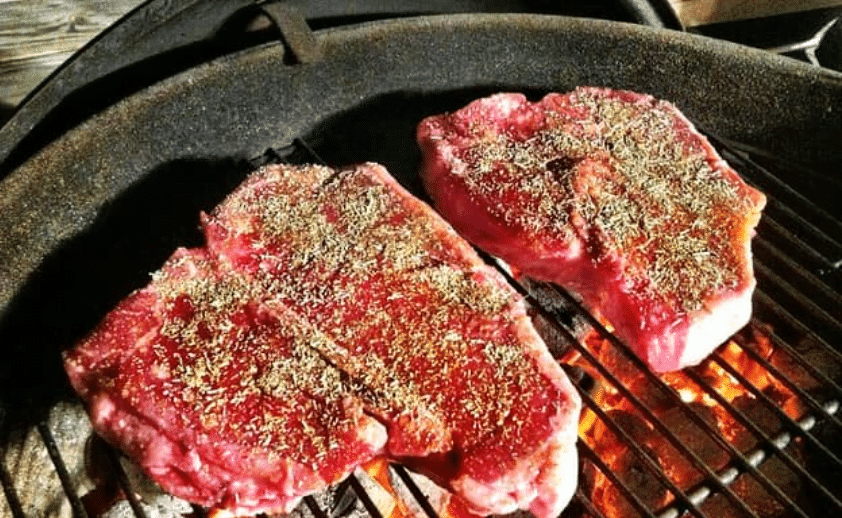
For best results, use a liberal amount of kosher salt and freshly ground black pepper.
Ensure the steak is dry before seasoning to help the spices adhere properly. Rub the seasoning all over the steak, covering both sides evenly.
4. Bringing Steaks to Room Temperature
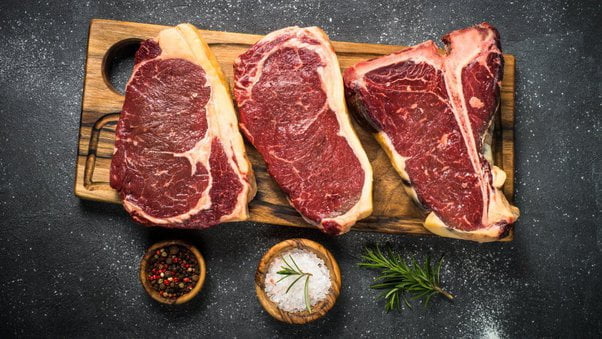
Letting your T-bone steaks come to room temperature before cooking helps prevent a cold center and promotes more even cooking. When a steak is cold from the refrigerator, it can lead to an overcooked exterior and undercooked interior.
Remove your steaks from the refrigerator about 30-40 minutes before cooking.
This allows them to gradually come to room temperature without compromising food safety.
5. The Thrill of the Grill: Why T-Bones and Grills Are a Perfect Match
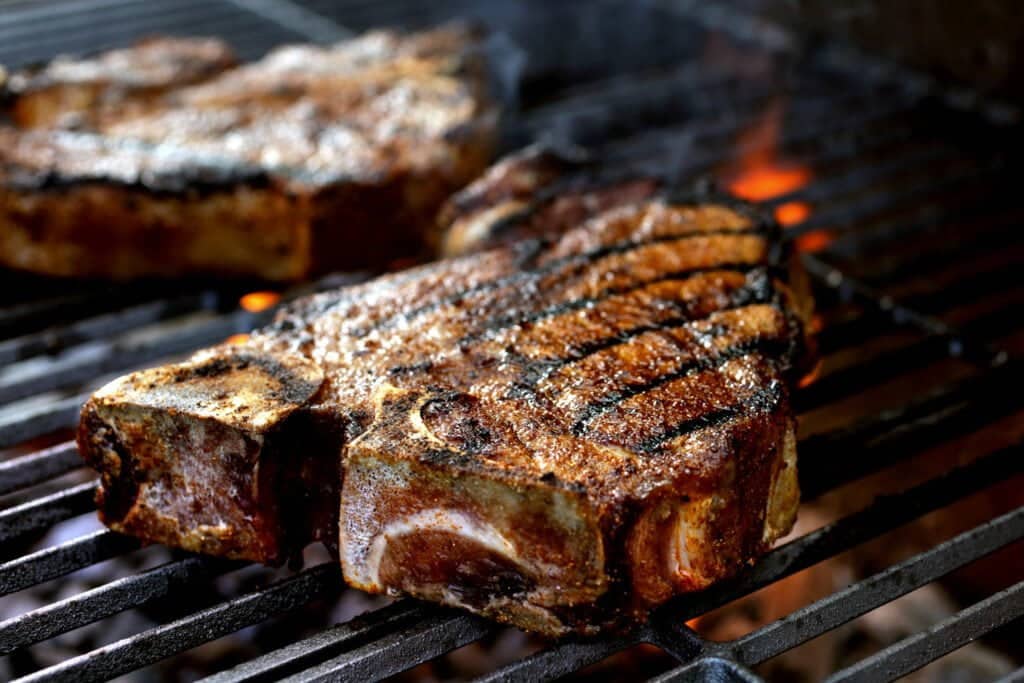
Grilling T-bone steaks is a favorite among steak enthusiasts.
It imparts a smoky flavor and beautiful char that complements the meat’s natural taste. Both charcoal and gas grills can produce excellent results, each with its unique benefits.
Mastering the Charcoal Grill
- Setting Up for Success: To grill T-bone steaks on a charcoal grill, arrange the coals to create a two-zone fire. Place most of the coals on one side of the grill for direct, high heat, and leave the other side with fewer coals for indirect, lower-heat cooking.
- The Grilling Process: Begin by searing the steaks over direct heat for 1-2 minutes on each side to develop a crispy, caramelized crust. Then, move the steaks to the cooler side of the grill and continue cooking until they reach the desired doneness. To achieve perfect sear marks, rotate the steaks 45 degrees halfway through searing on each side. Manage flare-ups by moving the steaks to the cooler side of the grill if the flames become too high.
Conquering the Gas Grill
- Preparing Your Gas Grill: To grill T-bone steaks on a gas grill, preheat the grill to high heat, aiming for a temperature around 450-500°F. Turn one side of the burners to high heat and the other to low or medium heat to set up the grill for direct and indirect cooking.
- Adapting to Gas Grilling: Maintaining an even cooking temperature when grilling T-bone steaks on a gas grill is essential. Adjust the burners as needed to prevent the steaks from burning or cooking too slowly. Use the lid to control flare-ups and maintain a consistent temperature, closing it if the flames become too high.
6. Broiling Basics: A Quick, High-Heat Alternative
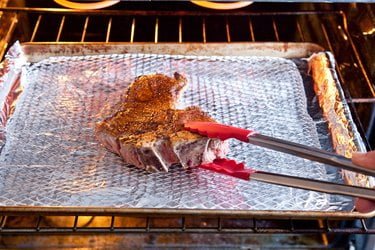
Broiling T-bone steaks in the oven is a great alternative to grilling. It provides a quick, intense heat source that mimics the effect of a grill.
This method is perfect for those who don’t have access to an outdoor grill or during inclement weather.
Step-by-Step Broiling Instructions:
- Position the oven rack 3-4 inches below the broiler element.
- Preheat the broiler on high for about 10 minutes.
- Place the seasoned T-bone steaks on a broiling pan or a rack set over a baking sheet.
- Broil the steaks for 3-4 minutes on each side for rare, 4-5 minutes for medium-rare, or 5-6 minutes for medium. Adjust the cooking time based on the thickness of your steaks and desired doneness.
- Use tongs to flip the steaks halfway through cooking to ensure even browning.
Achieve the Perfect Doneness:
- Rare: 120-130°F (49-54°C) internal temperature
- Medium-rare: 130-140°F (54-60°C) internal temperature
- Medium: 140-150°F (60-66°C) internal temperature
- Well-done: 160°F (71°C) and above internal temperature
7. The Art of Pan-Searing: Achieving a Perfect Crust
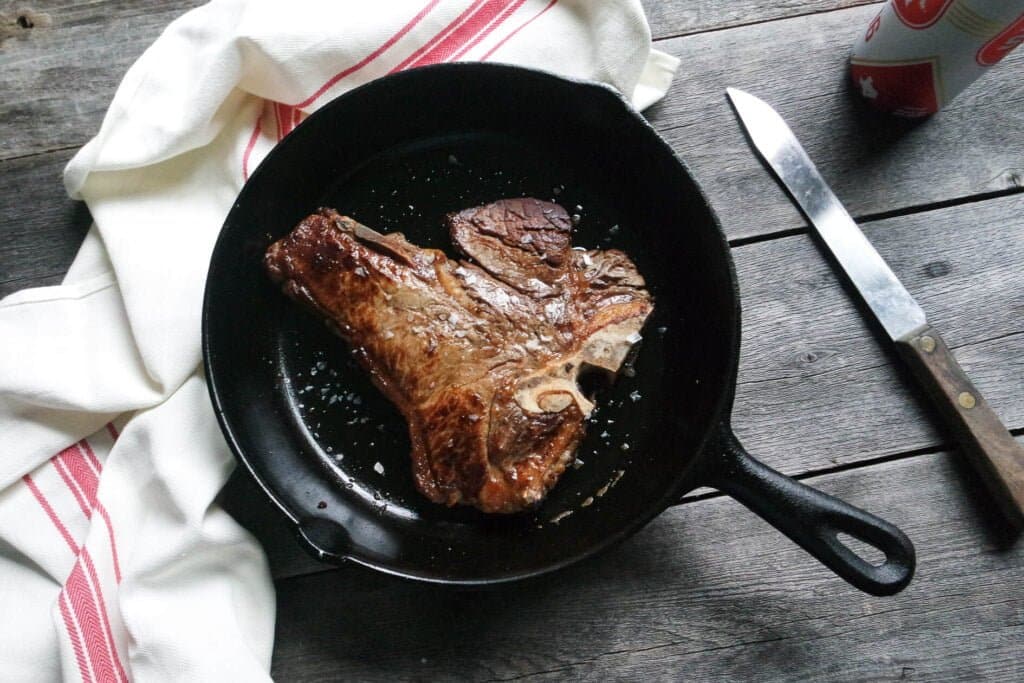
Pan-searing T-bone steaks are an excellent way to develop a flavorful, golden-brown crust while sealing in the meat’s natural juices.
This method is ideal for those who prefer cooking indoors or when outdoor grilling isn’t an option.
Techniques for a Flawless Sear:
- Choose a heavy-duty, oven-safe skillet, preferably cast iron or stainless steel.
- Preheat the skillet over medium-high heat for about 5 minutes or until it smokes.
- Add a small amount of oil with a high smoke point, such as avocado or grapeseed oil, to the skillet.
- Place the seasoned T-bone steak in the skillet and sear for 2-3 minutes on each side or until a deep golden-brown crust forms.
- Reduce the heat to medium-low and cook the steak, flipping every 2-3 minutes until it reaches the desired doneness.
Choosing the Right Skillet and Managing Heat:
For the best results when pan-searing T-bone steaks, use a heavy-duty skillet with excellent heat retention, such as cast iron or stainless steel.
These materials allow for even heat distribution and help create a superior sear. Adjust the heat settings as needed during the cooking process to maintain the proper searing temperature.
If the skillet becomes too hot and smokes excessively, reduce the heat slightly to prevent burning.
Step-by-Step Guide to Cooking Ribeye Steak Perfectly
1. Ingredients Required
| Ingredient | Description | Usage |
|---|---|---|
| Ribeye steaks | Preferably bone-in for added flavor | The main item to be cooked |
| Kosher salt | Coarse salt is ideal for seasoning steaks | Seasoning before cooking |
| Freshly ground black pepper | Adds spice and enhances meat flavor | Seasoning before cooking |
| Unsalted butter | Adds richness and helps in basting | Used during pan-searing |
| Fresh thyme | Herb that complements the steak flavor | Used during cooking for aroma |
| Garlic cloves | Adds a robust flavor to the steak | Used during cooking for flavor |
| Rosemary sprig | Herb is known for its strong, pine-like aroma | Used during cooking for aroma |
2. Thawing for Flavor and Consistency

Thawing your ribeye steaks completely ensures a consistent cooking experience and enhances the overall flavor.
When a steak is partially frozen, it can cook unevenly and may not develop the desired crust.
Thaw your ribeye steaks in the refrigerator for 24 hours for best results. This allows the meat to melt evenly and safely, preventing bacterial growth and ensuring consistent texture.
3. How to Season
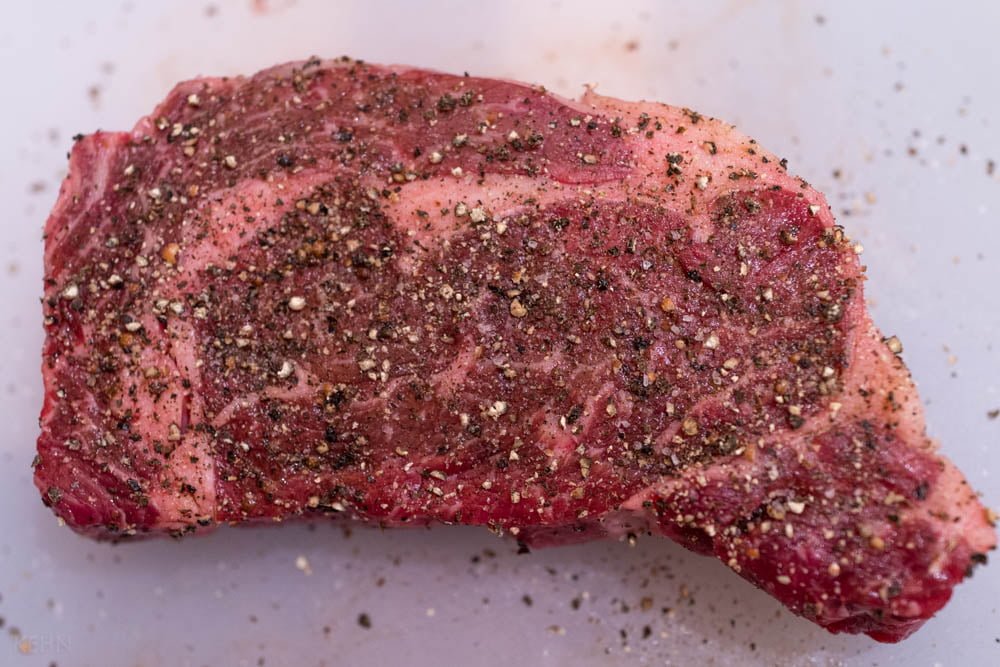
You can season your ribeye steaks well before cooking (acting as a dry brine) or immediately before placing them on the grill or in the pan.
If seasoning in advance, use a generous amount of salt to help tenderize the meat. If seasoning just before cooking, be careful not to oversalt.
Regardless of when you season, covering the entire steak, including both sides and the edges, is essential. This is particularly important for thicker cuts to ensure even flavor distribution.
4. Bringing Steaks to Room Temperature
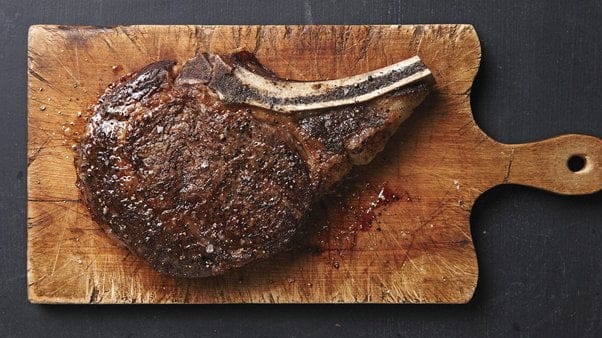
When a steak is cold from the refrigerator, it can lead to an overcooked exterior and undercooked center.
Remove your ribeye steaks from the refrigerator about 30-40 minutes before cooking to bring them to the proper temperature. This gives them enough time to gently rise in temperature without compromising food safety.
5. The Perfect Pairing: Ribeye Steaks and the Grill
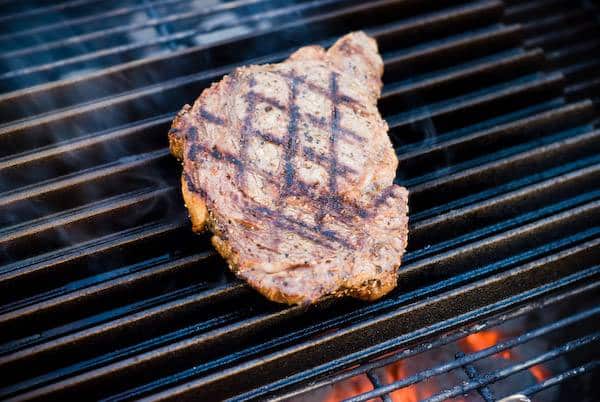
Grilling ribeye steaks is an excellent way to enhance their rich marbling and create a tender meal. The grill’s high heat helps render the fat, infusing the meat with a delicious, juicy taste.
Ribeyes on the Charcoal Grill
When grilling ribeye steaks on a charcoal grill, pay close attention to the grill’s temperature and the placement of the steaks.
The rich marbling of ribeyes can cause flare-ups, so it’s crucial to have a cooler side of the grill ready to move the steaks if needed.
To optimize fat rendering and flavor, start by searing the steaks over direct heat, then move them to the cooler side to finish cooking.
Ribeyes on the Gas Grill
Due to their higher fat content, grilling ribeye steaks on a gas grill requires a slightly different approach than grilling T-bones.
Preheat the grill to medium-high heat, around 400-450°F, to prevent the fat from causing excessive flare-ups.
Cook the steaks on each side for 3-4 minutes over direct heat, then move them to the cooler side of the grill to finish cooking to the desired doneness.
Use the lid to control the temperature and prevent the steaks from burning.
6. Broiling Ribeye Steaks in the Oven

Check the internal temperature of the ribeye steaks using a reliable meat thermometer to ensure even cooking and the desired doneness.
Insert the thermometer into the thickest part of the steak, away from the bone and fat. For best results, aim for the following temperature ranges:
- Rare: 120-130°F (49-54°C)
- Medium-rare: 130-140°F (54-60°C)
- Medium: 140-150°F (60-66°C)
- Well-done: 160°F (71°C) and above
7. Pan-Searing Ribeye Steaks
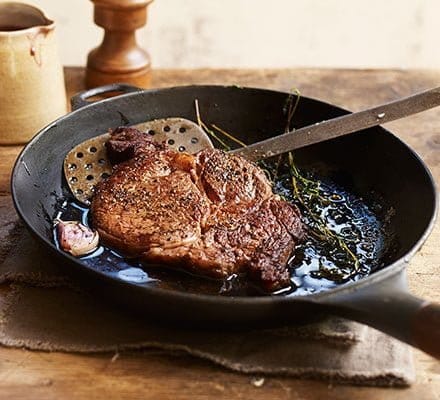
To enhance the flavor of pan-seared ribeye steaks, consider basting them with butter and herbs during cooking. This technique adds richness and depth to the meat, complementing the ribeye’s natural marbling.
Ingredients for Butter Basting:
- 2-3 tablespoons unsalted butter
- 2-3 garlic cloves, smashed
- 2-3 sprigs fresh thyme or rosemary
The Butter Basting Method:
- Reduce the heat to medium-low after searing the ribeye steak on both sides.
- Add the butter, garlic, and herbs to the skillet.
- As the butter melts, use a spoon to baste the steak continuously, tilting the skillet to collect the butter and drizzling it over the meat.
- Continue basting the steak for 2-3 minutes or until it reaches the desired doneness.
Incorporating Herbs for Flavor:
Using fresh herbs like thyme or rosemary during the butter-basting process infuses the ribeye steak with an aromatic, savory flavor.
The herbs’ oils are released into the butter as it melts, creating a flavorful basting liquid that complements the ribeye’s rich taste. Experiment with different herb combinations to find your preferred flavor profile.
Comparison of T-Bone and Ribeye
| Feature | T-Bone Steak | Ribeye Steak |
|---|---|---|
| Cut Location | Cut from the short loin section of the cow, featuring the T-shaped bone that separates the tenderloin and strip steak. | Sourced from the cow’s rib section, it often includes a rib bone in bone-in varieties. |
| Taste and Texture | The tenderloin (mild and tender) and strip steak (robust and chewier) offer a dual flavor profile. | Known for its uniform richness and beefy flavor due to extensive marbling, resulting in a consistently tender texture. |
| Flavor Profile | Combines the mild, buttery flavor of the tenderloin with the more intense, beefy taste of the strip steak. | It features a rich, deeply beefy flavor that is intense and decadent due to its high-fat content. |
| Fat Content and Marbling | Moderate marbling contributes to a balanced flavor and texture, particularly in the strip steak portion. | Highly marbled throughout, which enhances its juiciness and flavor, making it extremely succulent. |
| Cooking Preferences | The distinct textures of the tenderloin and strip steak allow for diverse cooking experiences; they can be grilled or pan-seared to different doneness levels within the same cut. | Its uniform texture is ideal for consistent cooking methods like grilling, pan-searing, or broiling, maintaining even juiciness and tenderness. |
| Price Difference | Generally less expensive than Ribeye, price varies based on the proportion of tenderloin to strip steak. | It is typically more expensive than T-Bone due to the high demand for its marbling and tenderness, especially for prime grades. |
Specialty Methods for T-Bone Steaks
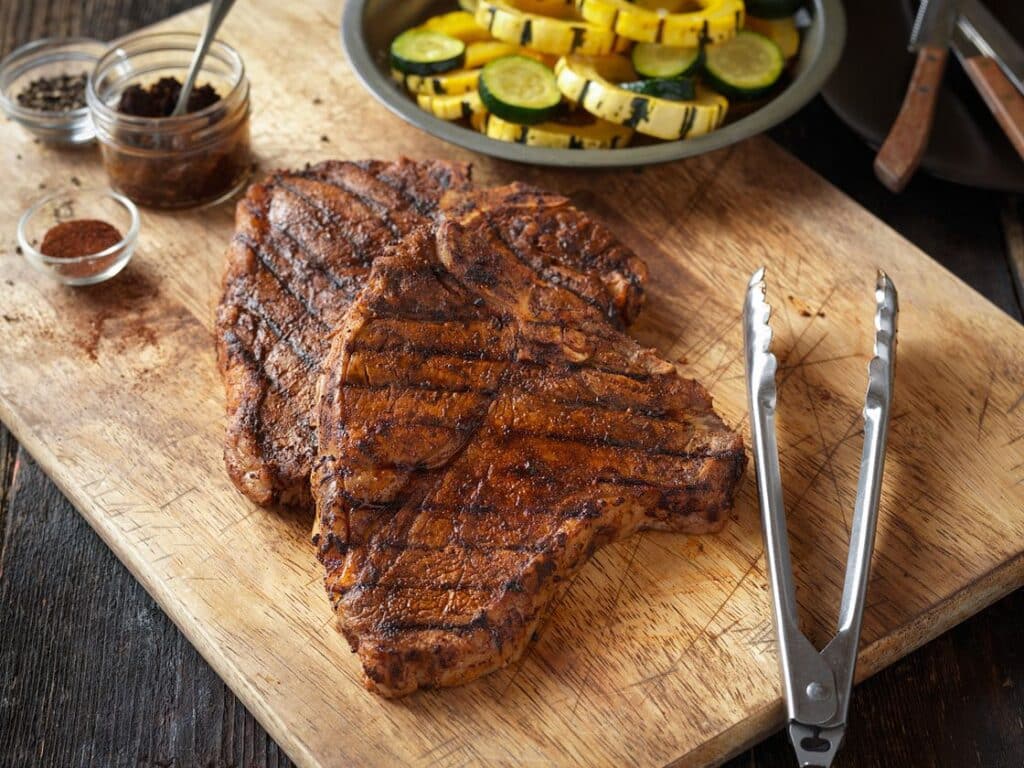
The Value of Advanced Cooking Methods While traditional grilling, broiling, and pan-searing techniques can produce delicious T-bone steaks, exploring advanced cooking methods like reverse searing, sous vide, and smoking can take your steak game to the next level.
These techniques offer enhanced flavor, texture, and precision in achieving your desired doneness.
1. Mastering the Reverse Sear
Reverse searing involves slowly cooking the steak at a low temperature until it reaches your desired doneness, then finishing it with a quick sear on high heat to develop a flavorful crust.
This method ensures even cooking throughout the steak, allowing for better control over the final internal temperature.
Step-by-Step Reverse Searing Process:
- Preheat your oven to 250°F (121°C).
- Place the seasoned T-bone steak on a wire rack set over a baking sheet and insert a meat thermometer into the thickest part of the steak.
- Cook the steak in the oven until it reaches an internal temperature of 10-15°F (5-8°C) below your desired doneness (e.g., 115°F (46°C) for medium-rare).
- Remove the steak from the oven and let it rest for 5-10 minutes.
- Preheat a cast iron skillet over high heat until smoking hot.
- Sear the steak for 30-60 seconds on each side to develop a golden-brown crust.
- Let the steak rest for an additional 5 minutes before slicing and serving.
2. Sous Vide: The Ultimate in Precision Cooking
Equipment and Setup:
For sous vide T-bone steaks, you’ll need an immersion circulator, a large container for the water bath, and vacuum-sealed bags or heavy-duty plastic bags for storing the steaks.
Set up your immersion circulator in the water bath and preheat it to your desired temperature.
Sous Vide Cooking Process:
- Season your T-bone steaks with salt and pepper, then place them in vacuum-sealed or heavy-duty plastic bags.
- Submerge the sealed bags in the preheated water bath and cook for 1-4 hours, depending on your desired doneness (e.g., 2 hours at 130°F (54°C) for medium-rare).
- Remove the steaks from the bags and pat them dry with paper towels.
- Sear the steaks in a hot cast iron skillet for 30-60 seconds on each side to develop a crust.
- Let the steaks rest for 5 minutes before slicing and serving.
Specialty Methods for Ribeye Steaks
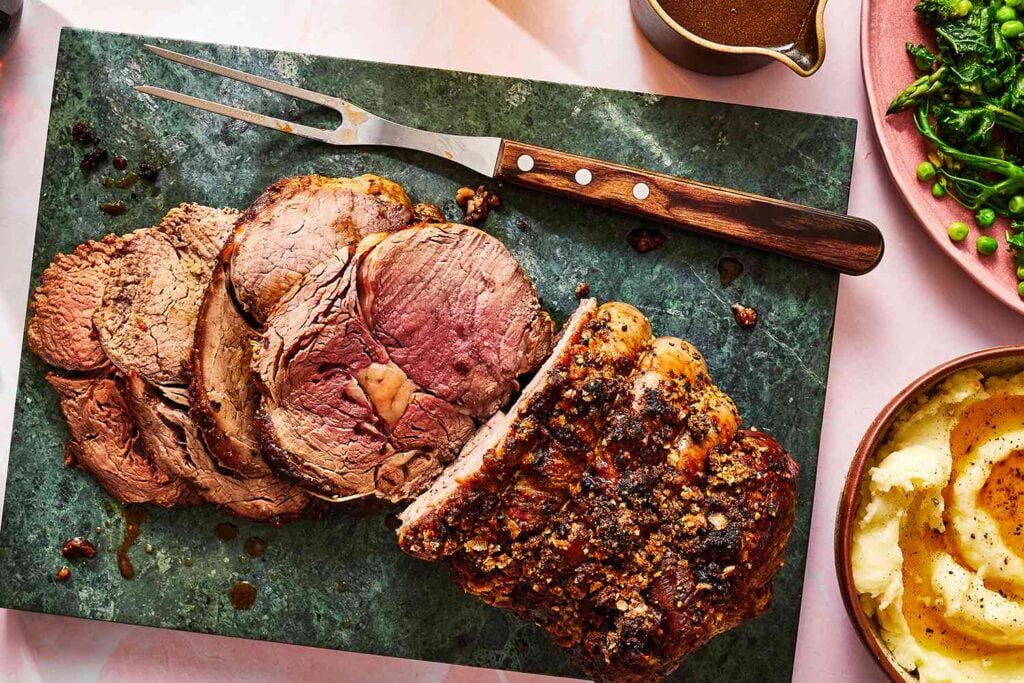
1. Perfecting the Reverse Sear for Ribeyes
- Preheat your oven to 275°F (135°C).
- Season the ribeye steaks generously with salt and pepper.
- Place the steaks on a wire rack set over a baking sheet and insert a meat thermometer into the thickest part of the steak.
- Cook the steaks in the oven until they reach an internal temperature of 100-110°F (38-43°C) for about 30-40 minutes for medium-rare.
- Remove the steaks from the oven and let them rest for 10 minutes.
- Preheat a cast iron skillet over high heat until smoking hot.
- Add a small amount of oil with a high smoke point (e.g., avocado or grapeseed oil) to the skillet.
- Sear the steaks for 1-2 minutes on each side to develop a golden-brown crust.
- Let the steaks rest for an additional 5 minutes before slicing and serving.
2. Achieving Ribeye Perfection with Sous Vide
- Preheat your immersion circulator to 135°F (57°C) for medium-rare.
- Season the ribeye steaks with salt and pepper, then place them in vacuum-sealed or heavy-duty plastic bags.
- Submerge the sealed bags in the preheated water bath and cook for 2-4 hours, depending on the thickness of the steaks.
- Remove the steaks from the bags and pat them dry with paper towels.
- Preheat a cast iron skillet over high heat until smoking hot.
- Add a small amount of oil and butter to the skillet, then sear the steaks for 30-60 seconds on each side to develop a crust.
- Let the steaks rest for 5 minutes before slicing and serving.
T-Bone Steak Doneness Chart
| Doneness Level | Temperature Range |
|---|---|
| Rare | 120-130°F (49-54°C) |
| Medium-rare | 130-140°F (54-60°C) |
| Medium | 140-150°F (60-66°C) |
| Medium-well | 150-160°F (66-71°C) |
| Well-done | 160°F (71°C) and above |
Ribeye Steak Doneness Chart
| Doneness Level | Temperature Range |
|---|---|
| Rare | 120-130°F (49-54°C) |
| Medium-rare | 130-140°F (54-60°C) |
| Medium | 140-150°F (60-66°C) |
| Medium-well | 150-160°F (66-71°C) |
| Well-done | 160°F (71°C) and above |
Summing It Up
Mastering the art of cooking T-bone and ribeye steaks is a rewarding experience that can elevate your culinary skills and impress your loved ones.
By following the step-by-step preparation and cooking techniques outlined in this guide, you’ll be able to achieve perfectly seared, juicy, and flavorful steaks every time.
Remember to select high-quality cuts, allow them to come to room temperature before cooking, and use a meat thermometer to ensure your desired doneness.
Experiment with different cooking methods, such as reverse searing or sous vide, to discover new ways to enhance the natural flavors of these premium steaks.
With practice and patience, you’ll soon become a steak-grilling pro, ready to tackle any backyard barbecue or special occasion dinner confidently.
Happy grilling!




